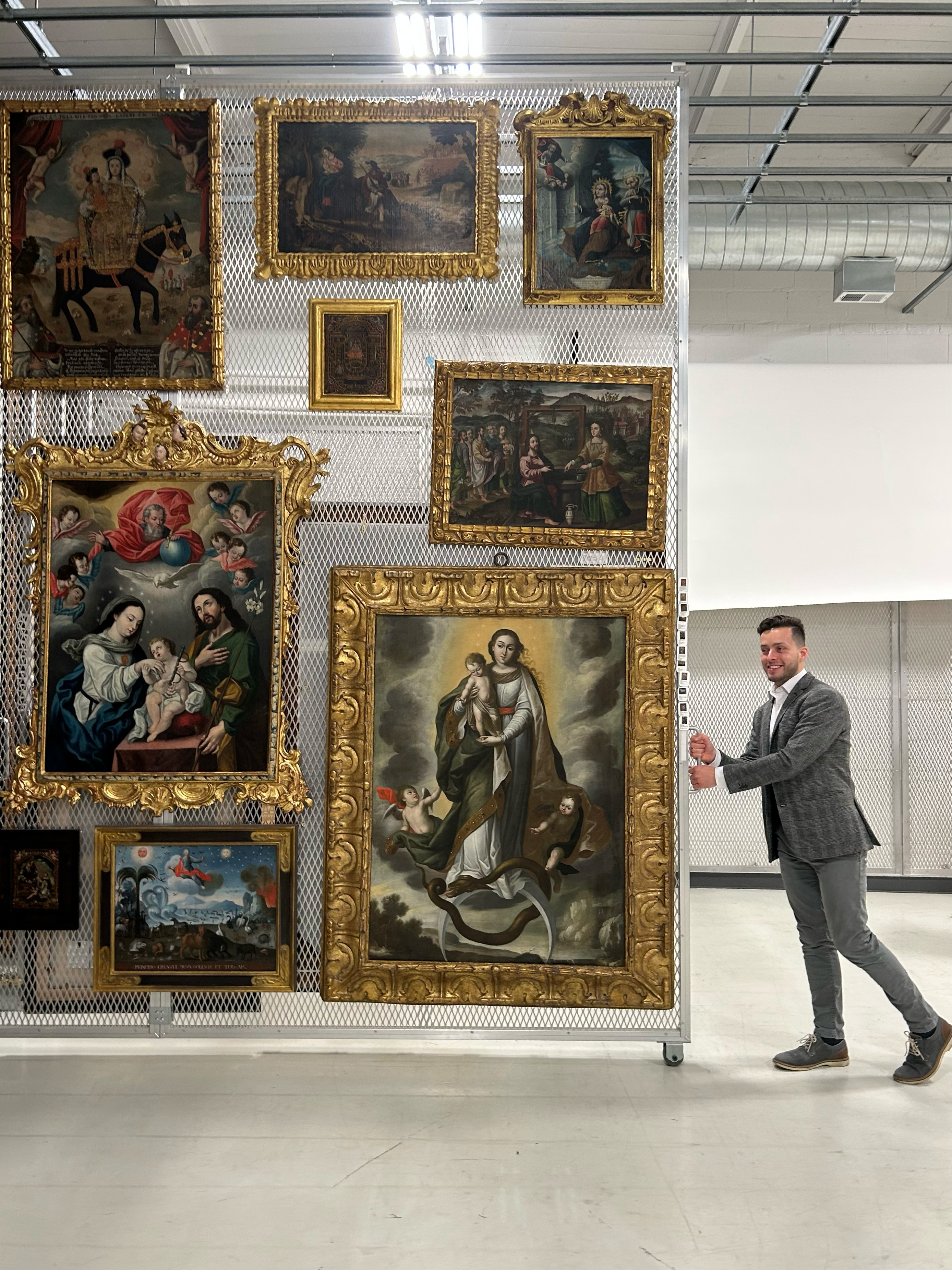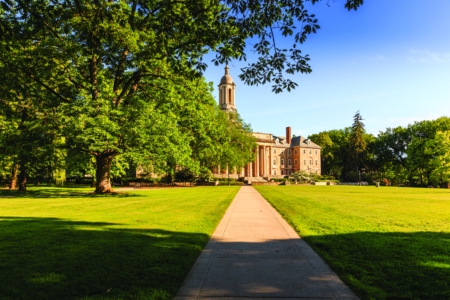Music colours into each, unlikely facet of life.
That’s what Sunanqi Huang learned when she got to college. She’s hardly a stranger to music, having started piano at the age of six back home in Guangzhou, China. She went to Xinghai Conservatory, but the urge to study Western music led her to New York. It’s there that she extended her exposure to more general courses and decided a university would be a better fit than a conservatory. She wanted a place flexible in exploration.
After spending her first and second years at Penn State’s College of Arts and Architecture searching for a chance to express herself in an innovative way, she found music technology. It was a programme that allowed her to see music meshed with maths and physics, and real instruments infused with electronic sound.
“Technology brings so many inventions to sound,” Huang says, today a BA in Music Technology graduate and known as a “guru” in the field. “We can produce and record music on Digital Audio Workstations (DAW), let algorithms analyse and generate music automatically.”
That’s what the College of Arts and Architecture really is — a blank canvas to explore your chosen area of study in ways you hadn’t before. There’s landscape architecture, graphic design, music education, and many other degree programmes under the umbrella of the College of Arts and Architecture, from which you can choose.
Penn State may be in the top 6% of universities worldwide out of 1,503 QS-ranked institutions, but its approach to teaching and learning scales down to the individual. The School of Music has experienced, curious faculty to support each pursuit and a curriculum that allows you to collaborate with students from different departments.
Students from the theatre and music departments have just collaborated on a project to combine electronic music and pollinator research, aiming to craft music that emulates the essence and sound of a location in nature.
While at Penn State, Huang worked with a conducting student to record an orchestra for a project. She also joined the Asian Classical Music Club on campus and had the chance to meet students from different cultures, bringing the difference in perspective and sound into her own music.
And you don’t have to be a music major to pursue music here. That’s another key feature of the college — it welcomes every person, every passion.
“When I was in high school, I attended academic classes in the mornings and went to the music conservatory in the afternoons,” says Sarah Guglielmi, a BSc Mathematics graduate with a minor in music performance. “I wanted to continue to learn both mathematics and cello at a high level in university, as I loved both and had hopes for a career in both.”
A cello player since a young age, Guglielmi found it nearly impossible to reach for both math and music in France. So, she looked at schools in the US, and found Penn State. The maths-music course load was manageable, and even when it got busy, professors were understanding.

The School of Music and Department of Art History are part of the Penn State College of Arts and Architecture. Source: Penn State University
The School of Music ushers you forward with resources to excel at your combined interests, create a piece, and play it to an audience, whether in a group or solo. One of these resources is the Penn State Composition Programme, in collaboration with major publisher JW Pepper.
Music composition and music technology students can promote, publish and sell their work while also maintaining their copyrights. There are opportunities to hear both students’ and established composers’ works performed by School of Music ensembles such as the Concert Choir, University Choir, Philharmonic Orchestra, Symphonic Wind Ensemble, and Percussion Ensemble, plus instrumental studio concerts, student recitals, and specially produced performances in various venues on campus.
The school’s ensembles — from quartets and choirs, to Penn State’s marching band for the Nittany Lions — perform nearly 500 concerts each year. The top ensembles perform nationally and internationally, including annual concerts at some of the most renowned venues on the East Coast.
“The diversity and wealth of performance opportunities is one of the most important and enjoyable things offered,” Guglielmi says. “I often received advice from peers, which enabled us to exchange tips and to create a supportive and judgement-free space.”
But music isn’t the only facet of the arts.
For art history student Guanhua, his move to America to study art history at Penn State was sparked by his grandfather’s dying wish. “Before leaving, he told me that I must go to the United States to study – even an envelope from 12 years ago had such a message written on it,” he says.
In the chaos of the pandemic, Penn State was the only school to even communicate and admit him for the spring intake. He’s part of the Department of Art History now, which explores every aspect of artistic production, whether paintings or architecture, in the Americas or Africa — perfect for Guanhua’s “consuming passion for world literature and culture.”
When asked about his most impactful courses thus far, he answers, “too many.” Professor Han Chen’s Chinese Art History gave him a deeper understanding of his culture. Professor Anne Cross taught him about American Art and Society, giving him a “complete understanding of how Americans understand their art, not just objective narratives.”

Learning is experiential at Penn State, especially at its new Palmer Museum of Art. Source: Penn State University
Guanhua is grateful for the support of his department and his cohort. “I have a lot of confidence in our curriculum and our students: this is a dynamic group of people who are determined and innovative,” he says. “Where there is a will for Penn State students, there is a roar of Nittany Lions.”
In future, Guanhua hopes to progress to a graduate programme and seize more of the college’s opportunities. Spaces like the Center for Virtual/Material Studies and the Palmer Museum of Art give students a chance to work on projects, in the classroom and out through internships.
Learn more about the College of Arts and Architecture and their programmes.













